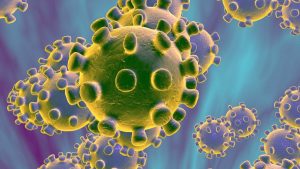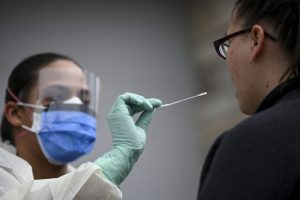We all do it every day. Whether you are conscious of the decision, you make a risk judgement daily. For example, you choose to get into a car and drive. Road Safety International (1) reported nearly 1.25 million people die in road crashes each year, on average 3,287 deaths a day. An additional 20-50 million are injured or disabled. More than half of all road traffic deaths occur among young adults ages 15-44.
Yet, most of us don’t think twice about making a trip. In fact, as Americans, we enjoy our cars so much that we will make unnecessary road trips just to get out and see the countryside. Make no mistake, when you get into a car, you have accepted a certain amount of risk or either serious injury or death.

COVID-19
COVID-19. An invisible enemy of which there is not a cure and has killed thousands worldwide is something to take seriously. The virus is especially concerning to those in a high-risk category.
We have all seen the reports from China, Italy, Iran, and South Korea. Interestingly, each country has taken a different approach in response to the virus.
Even inside the US, each state and municipality are approaching the virus differently. Some may say that certain areas have gone over the top and closed/quarantined everything. Others have taken the approach of quarantining the sick and those exposed to the virus. Still others have ignored the warnings and have suffered the consequences of an overwhelmed health care system.
In response to act responsibly, large and small businesses are closing their doors at least temporarily. In fact, we sent our employees home to work as we determined we can be nearly as effective from home as the office.
What is the right answer?
One thing is certain, bringing the economy to a grinding halt by closing businesses is not sustainable. President Trump noted as much in his comments Monday evening March 23, 2020. Obviously, we need to protect the most vulnerable in society and none of us want to be responsible for the spread of the virus.
Unfortunately, there are still a lot of unknowns about the virus. I truly believe that the current leadership is attempting to make the best decisions based on information available. Using what we know, let’s draw some logical conclusions from that data.
- We don’t understand the robustness of this disease. Assuming that COVID is similar to the flu, the virus should weaken when the weather warms and humidity rises, but we don’t know for sure if this will occur. If it’s like the flu, the disease could reappear in the fall when the weather turns.
- Experts say that a vaccine is still months away. Although there have been some reports that existing drugs are having a minor effect on the virus, a tested and proven regimen has not been found.
- Experts say that the social distancing (keeping six feet apart) and the basic hygiene regime (wash hands, keep hands from face, sanitize surfaces) is working to slow the spread.
- Even so, the virus is going to spread if infected people are coming in contact with others.

Testing for COVID-19
Doing what we can to prevent the spread of the virus is rational. “The 15 days to Slow the Spread” is a strategy and perhaps necessary as the US doesn’t have enough testing kits available to isolate those infected.
Obviously, the best approach is to quarantine the sick and those who have been exposed. Evidence from South Korea shows that this was effective. Even so, the virus is going to spread as people will have to interact just to meet the basic necessities of life.
On Monday, March 23, The State of North Carolina announced that their school system will be closed until May 15. That makes sense as the school can continue to function remotely (home schooling). What will happen if all major businesses close until May 15? Or longer? What will be the reaction of public opinion if we lift the “quarantine” and ask people to return to work? Is it realistic to assume that two weeks from now the susceptibility to the disease will be any less?
Do we really think we can close down everything until the threat subsides? Obviously, Trump is right, closing down the economy long term is not a rational response, nor is it sustainable.
I believe we are smarter than this. There is always a balance that must be struck between risk and the consequences. We need to face the reality that people are going to get the virus. We can and should protect the vulnerable, those who are considered high risk. We can and must take common sense precautions.
Let’s keep our social distancing in place, continue to sanitize, wash hands, avoid coming to work sick, and limit our interactions with others. By the way, this needs to apply in all areas of our life, not just in the office. Let people who can effectively work from home, work from home. Let’s keep America working.
Reference 1 – https://www.asirt.org/safe-travel/road-safety-facts/
 Paul V. Kumler, P.E. is president of KTM Solutions, an engineering company that services the aerospace and large-scale manufacturing industries. In addition to aero structures engineering services, KTM Solutions designs and builds tooling supporting a broad clientele and various industries. www.ktmmechanical.com The company is headquartered in Greer, South Carolina with remote offices in Charleston, South Carolina. Mr. Kumler serves in several volunteer roles including the SC Aerospace Advisory Board. Mr. Kumler, a professional engineer, is licensed in Louisiana, South Carolina, Texas and Washington. He is married to Ginger A. Kumler. Together, they have two grown children and two grandchildren.
Paul V. Kumler, P.E. is president of KTM Solutions, an engineering company that services the aerospace and large-scale manufacturing industries. In addition to aero structures engineering services, KTM Solutions designs and builds tooling supporting a broad clientele and various industries. www.ktmmechanical.com The company is headquartered in Greer, South Carolina with remote offices in Charleston, South Carolina. Mr. Kumler serves in several volunteer roles including the SC Aerospace Advisory Board. Mr. Kumler, a professional engineer, is licensed in Louisiana, South Carolina, Texas and Washington. He is married to Ginger A. Kumler. Together, they have two grown children and two grandchildren.


Be the first to comment on "COVID-19 Response – It’s Not Sustainable"